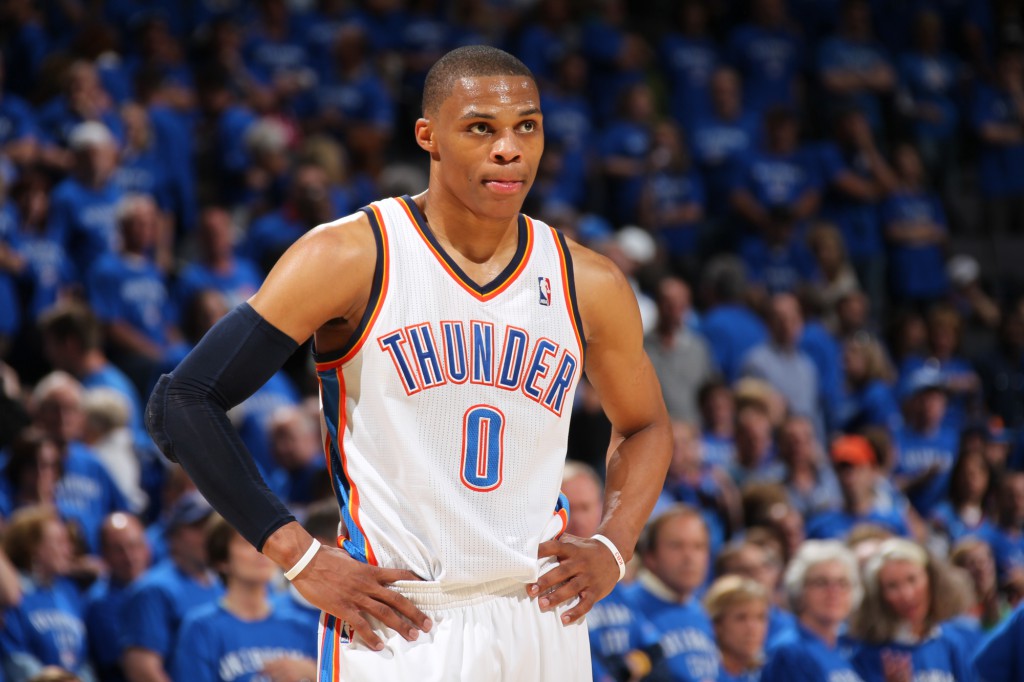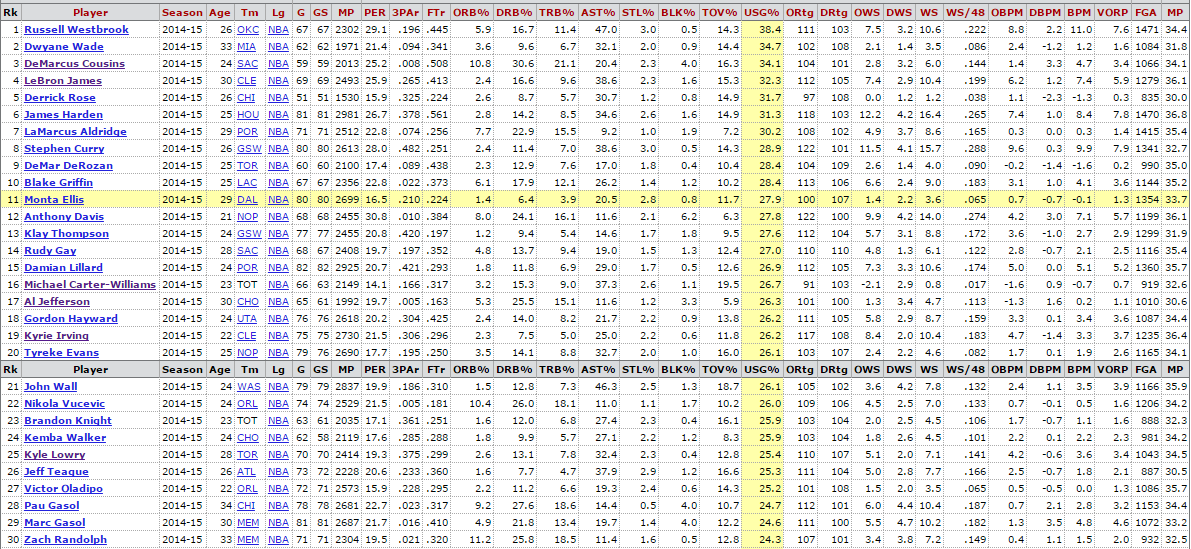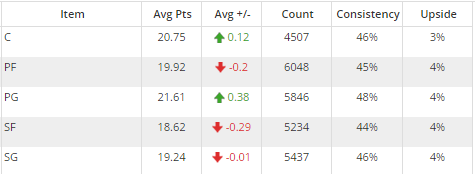If you’re unfamiliar with usage rate in basketball, it might be the most important term you should become familiar with before NBA DFS starts on October 27th. Usage is just the percentage of plays that a player finishes while on the court — and a player “finishing a possession” can come from a number of ways, notably making a basket, missing it and the opponent grabbing the defensive rebound, or a turnover.
Here were the top 30 player in terms of usage last year:
Basketball is different than football in that there are very few great fantasy players that don’t dominate the ball themselves – perhaps DeAndre Jordan is a good example of this, but that’s mostly because Chris Paul is his point guard. If you go through the list above, all of those players have the ball in their hands creating very often. Obviously, these are the guys we want to target on a nightly basis.
Of course, there’s good and bad usage – I’m not sure if there’s a site that breaks it down this way…if not, I’ll probably do so and release for you all every week this season. If you’re confused, what I mean is that usage is useful to gauge fantasy potential because those players are using possessions; however, there’s a big difference between Michael Carter-Williams using a lot of possessions with turnovers and LeBron James doing the same with points. “Good usage” would essentially be usage minus the turnovers.
This is also important because usage brings a good gauge of safety versus volatility. Look at the Plus/Minus over the last year of each position.
The players with the ball in their hands the most are point guards, so I think this data aligns with the thought that they’re the “safest” position in NBA DFS. I almost always take at least one top-tier point guard in my lineup – obviously it’s very slate-dependent but it’s somewhat of a heuristic, and we’ll get into this strategy in further articles – because of that safety they bring.
Interestingly, centers are the position that has the ball the least in their hands, at least theoretically, yet they still have a positive Plus/Minus. I think this has a lot to do with the fact of site pricing and that you can only roster one center. Even still, their consistency percentage – or amount of times they hit salary-expected value – is less than PGs.
Again, this is a very broad, intro-y article in NBA DFS and usage rate, but I think it’s good to start thinking and researching into the statistic. I’ll look more in depth into creating a “good usage” statistic as I think that’d be really helpful for DFS purposes. But in general, know that the top tier players are ones who have the ball in their hands a lot – it’s the same reason that QBs score the most points in fantasy football. Time plus opportunity equals gold in NBA DFS.







